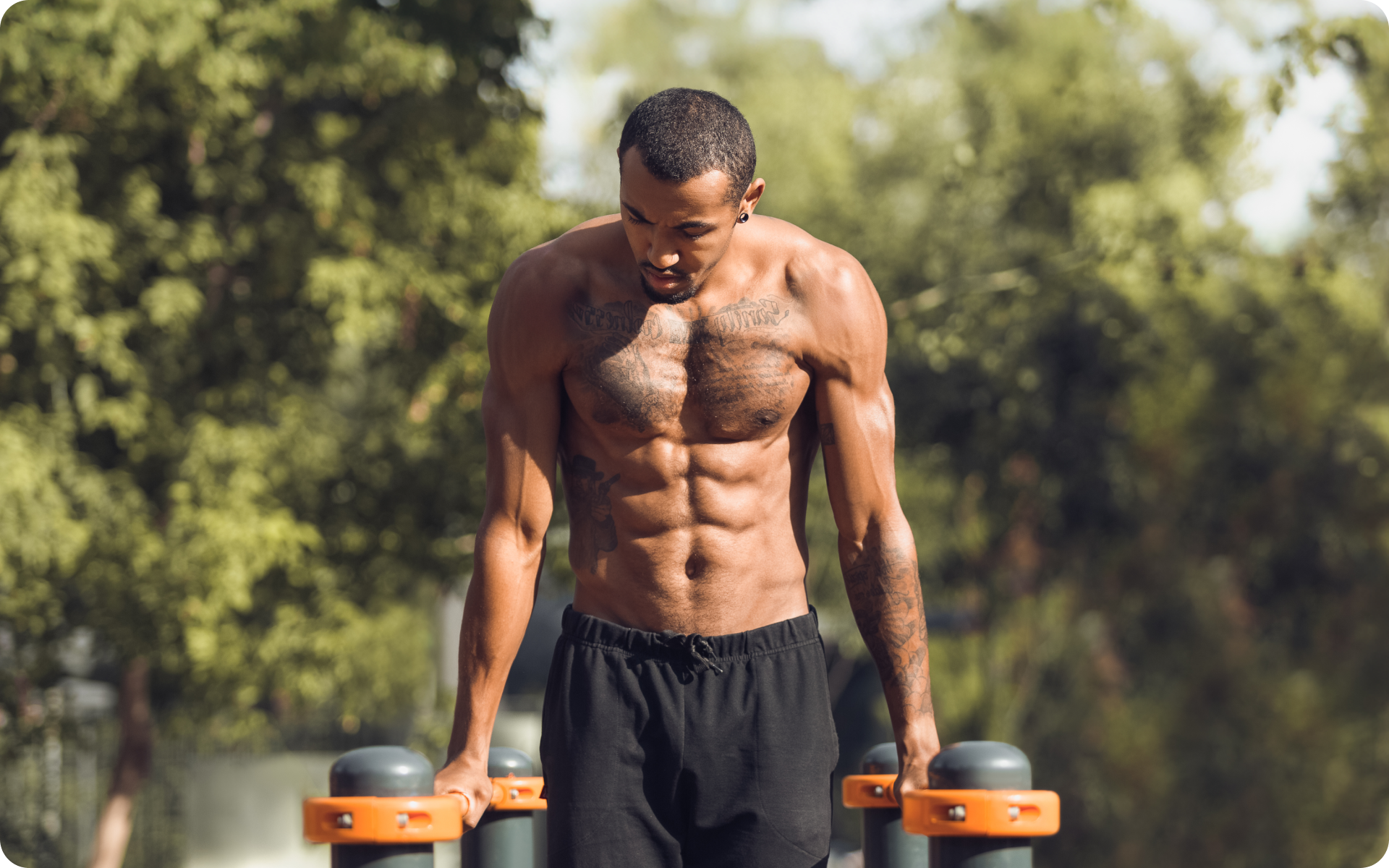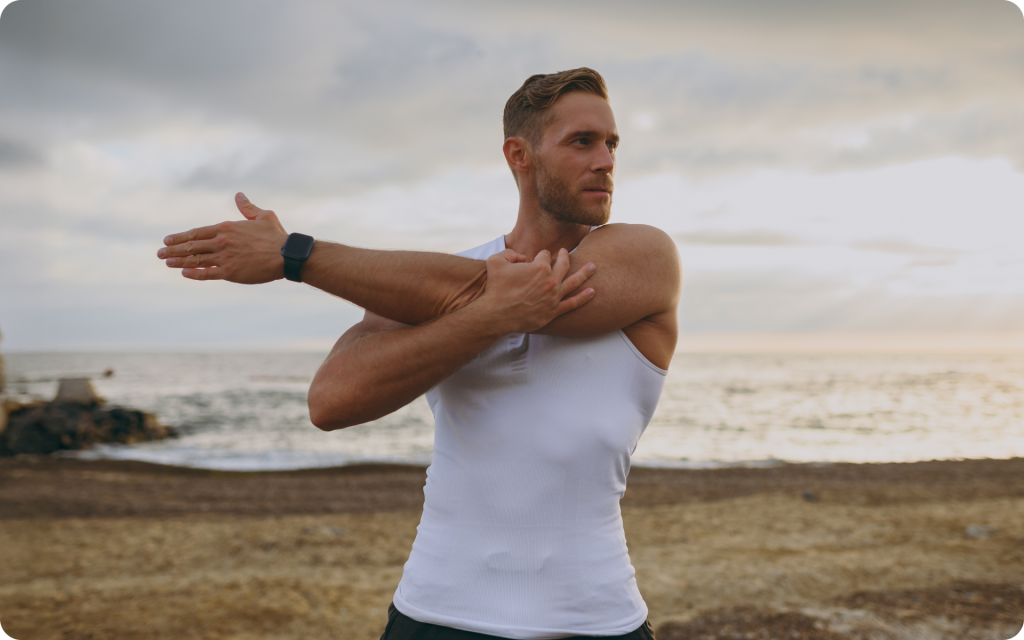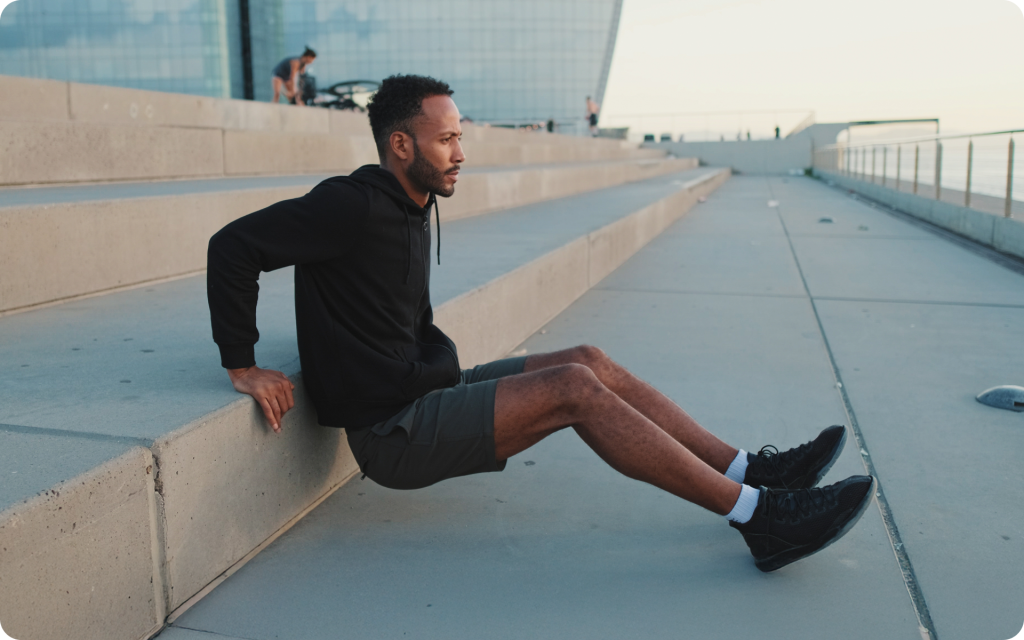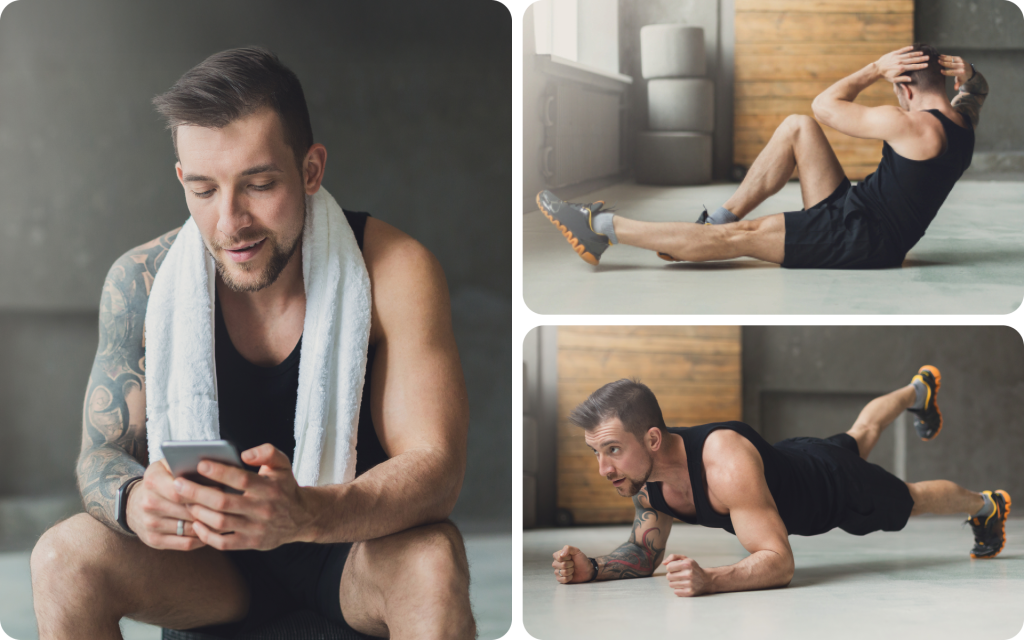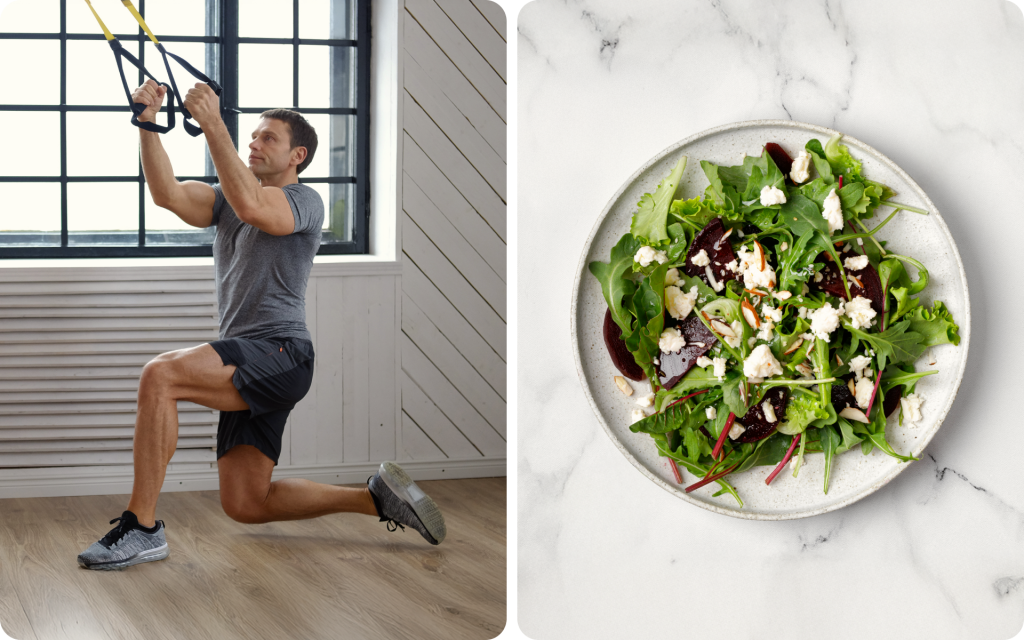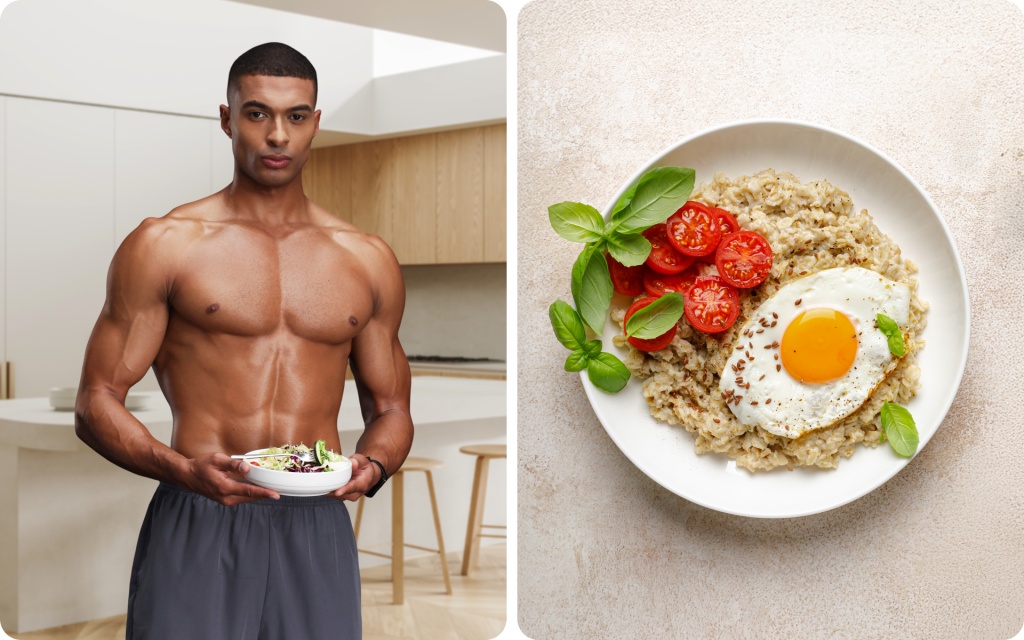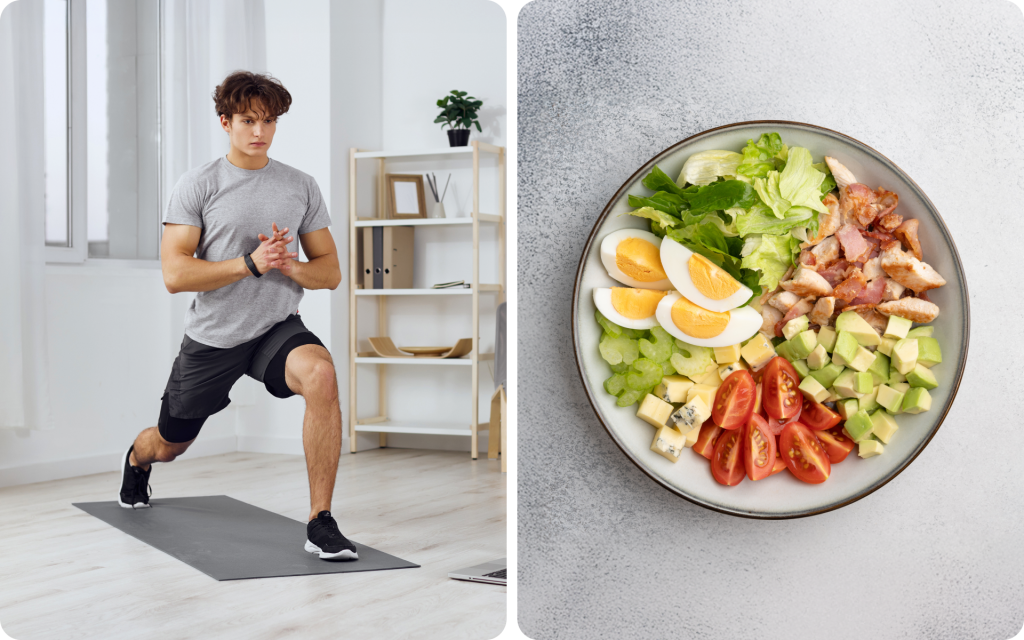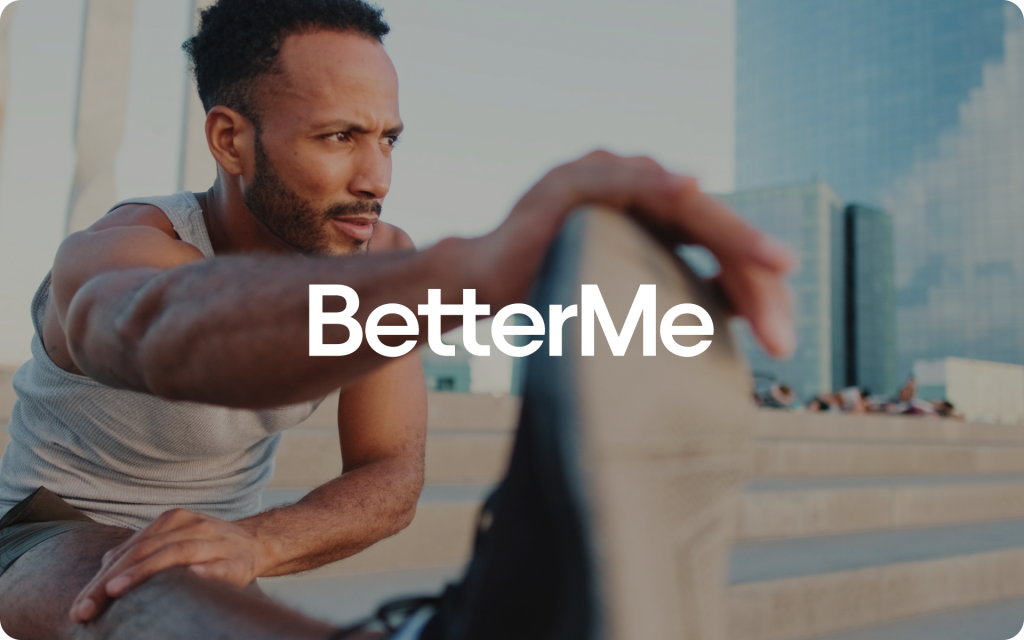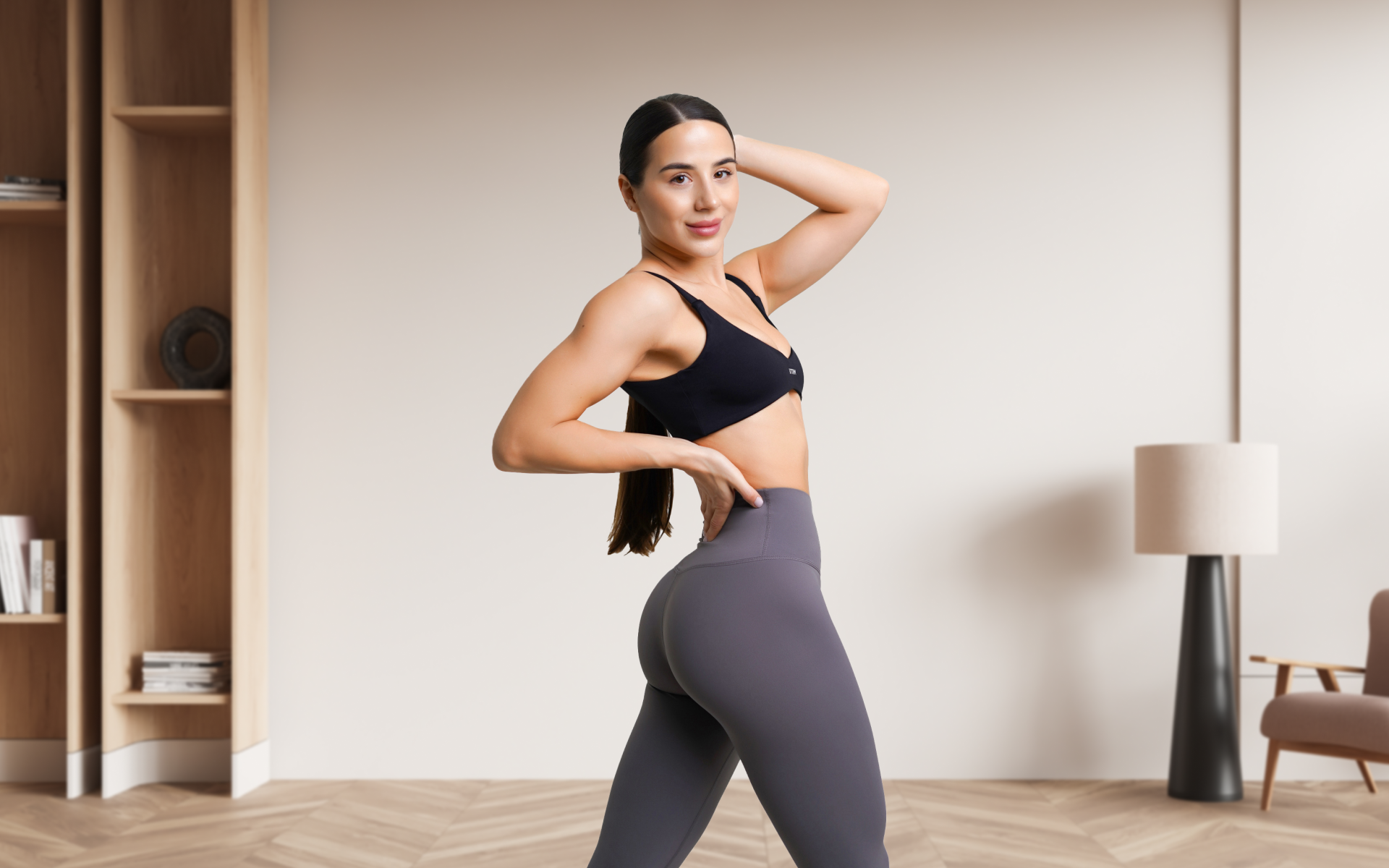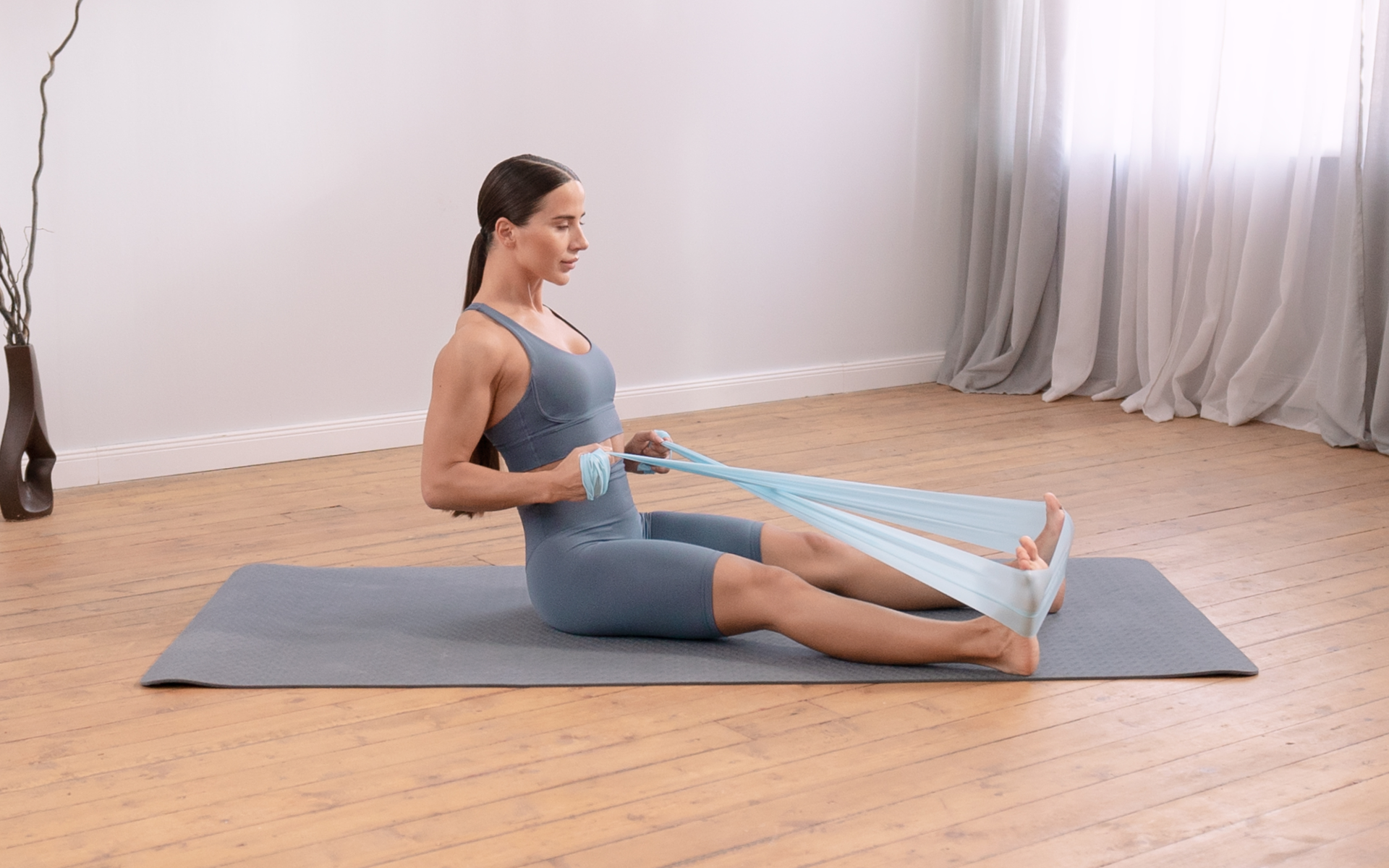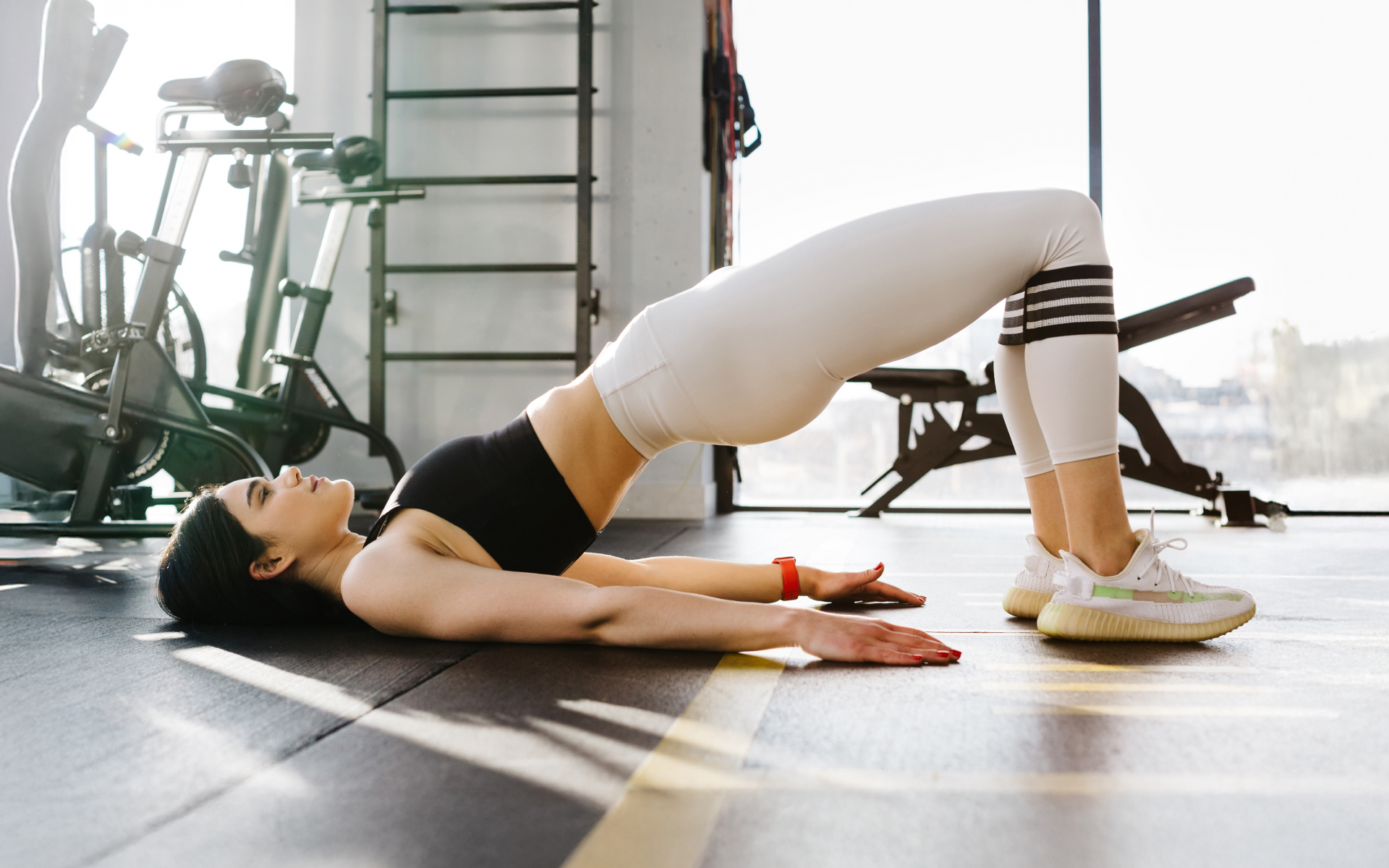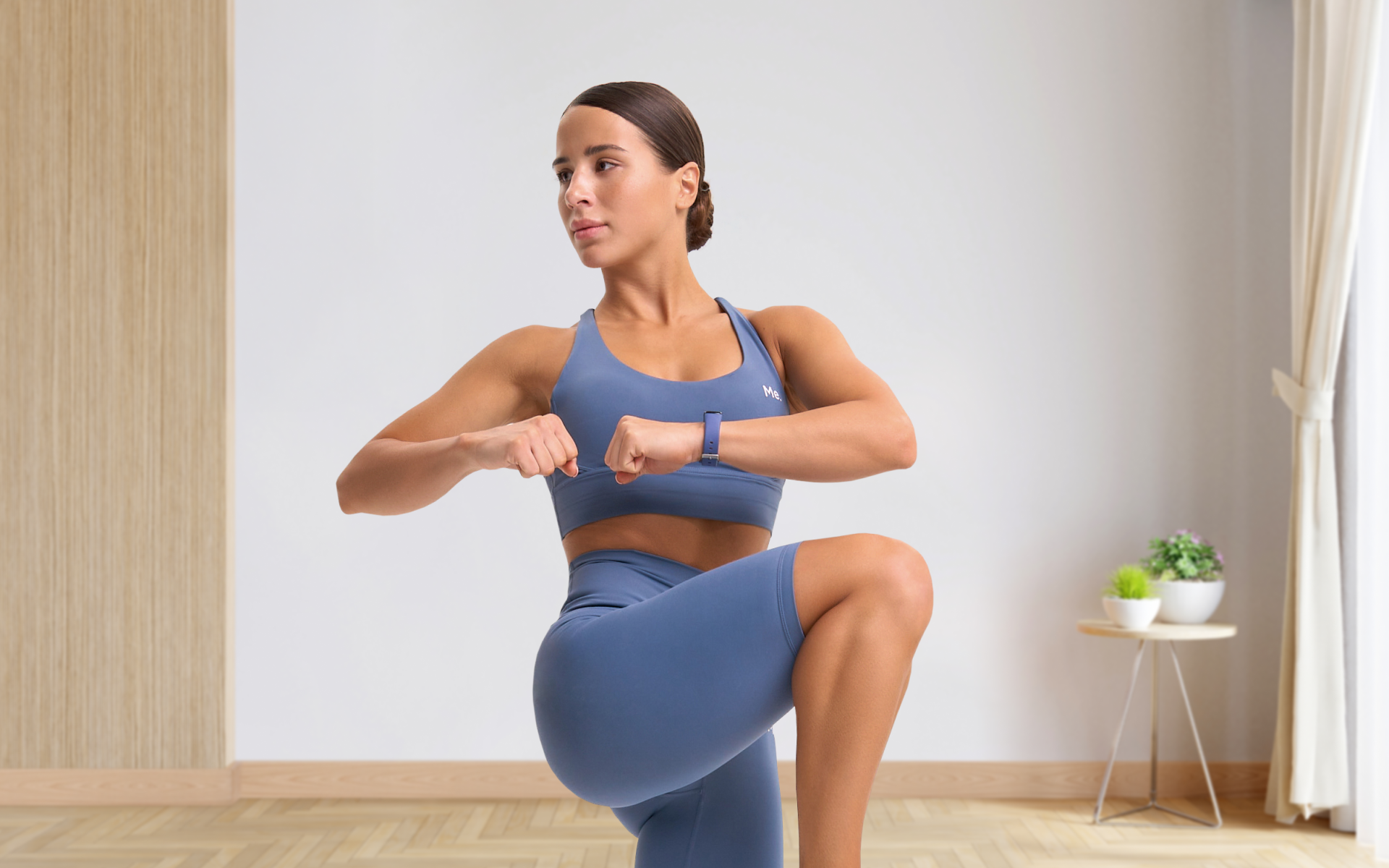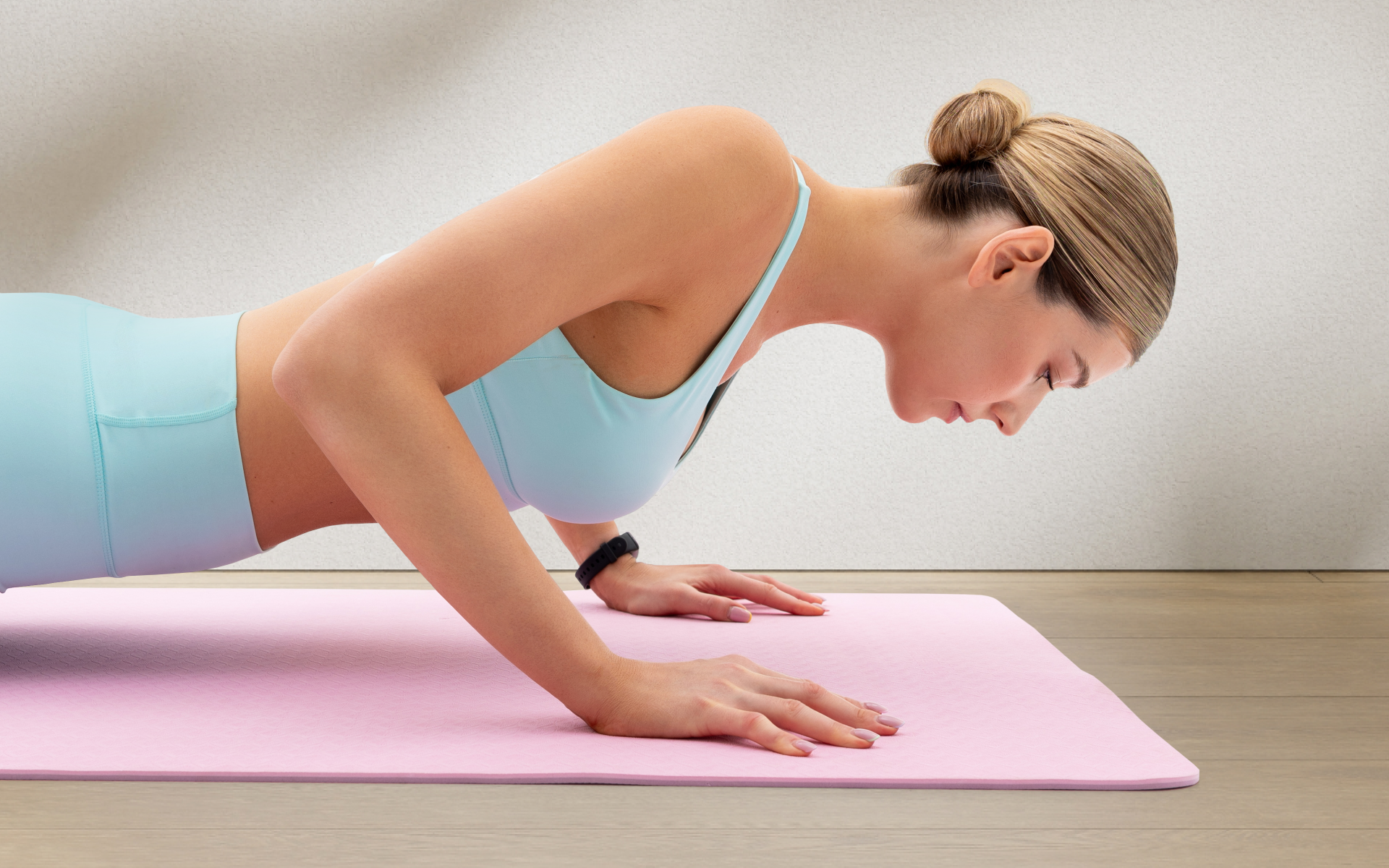Starting off with any exercise regimen may seem like an uphill battle. The fact that you have to be at the gym at a fixed time and get through a training session isn’t something everyone looks forward to. If you’re someone like me who barely wants to leave the house, you’re probably looking for easier ways to work out. What if I were to tell you that it’s quite possible?
Yes, you can build muscles at home with minimal or no equipment. We’re no longer living in times when people had to drag themselves to the gym or a field. Workouts are accessible on our screens, and certified trainers are just a few clicks away, which makes life easier for everyone. Although a gym has its own vibe and motivational impact, you can learn practices such as calisthenics, perform them at home, and get gym-like results.
Calisthenics uses your own body weight for resistance to improve your strength, flexibility, and coordination. The fact that you don’t rely on heavy machines makes it simpler. You can squeeze in a workout at home, in your office, or even while traveling. In this guide, you’ll learn fun facts about calisthenics, its science, and a few handy tips to get results faster.
Let’s learn how this cool workout practice can be a game-changer on your fitness journey.
What Muscles Does Calisthenics Build?
Some may assume that calisthenics is only for people who want to stay fit, but the truth is that the exercises under the calisthenics umbrella are also helpful for building muscles. This type of strength training is reliant on the principle of progressive overload (1). You’re not lifting weights, so the resistance is a little harder to manipulate. Instead, you can add difficulty to the exercise routines by adapting new moves. Many studies have proven that calisthenics can build strength and endurance by targeting major muscle groups. You can find some of these notable studies in the section below.
The primary muscle groups that you can build up with calisthenics are:
- Upper-Body Muscles
Push-ups, pull-ups, and dips primarily activate the pectoralis major, triceps brachii, deltoids, and latissimus dorsi. A study published in the Journal of Strength and Conditioning Research (2010) found that push-ups and bench presses trigger a similar muscle activation in the pectoral and triceps muscles (2). These can make calisthenics an effective upper-body strength builder.
- Core Muscles
Movements such as planks, leg raises, and hollow body holds target the rectus abdominis, transverse abdominis, and obliques. Research from Sports Biomechanics (2016) showed that core engagement is significantly higher during bodyweight exercises that require stabilization (3). It’s handy for exercises such as the L-sit and front lever.
- Lower-Body Muscles
Squats, lunges, and pistol squats strengthen the quadriceps, hamstrings, glutes, and calves. A study in the European Journal of Applied Physiology (2004) noted that bodyweight squats can stimulate muscle growth similarly to weighted squats (4). The only rule was to perform them with controlled tempo and depth.
These are the four main muscle groups that calisthenics work on. A calisthenics routine can be helpful as it supports physical and mental health. You can be physically fitter and feel much happier when you consistently move your body. There is solid evidence regarding how physical activity can increase happiness, improve mood, and reduce stress (5).
While building up those muscles may take time, you may start feeling better about yourself when following either specific or compound calisthenics exercises.
Read more: Calisthenics Workout for the Back: The Complete Exercise Guide
Can You Build Muscle with Just Calisthenics?
It may seem superficial to have a proper muscular build without using equipment or going to a gym. However, developments in calisthenics and their superb outcomes prove it’s quite possible.
Calisthenics is a form of functional fitness. It involves workouts that emphasize daily movements, such as lunging, squatting, pushing, and pulling. Improving functional strength can make a person more in control and help them avoid injuries when performing daily tasks.
Reasons why BetterMe is a safe bet: a wide range of calorie-blasting workouts, finger-licking recipes, 24/7 support, challenges that’ll keep you on your best game, and that just scratches the surface! Start using our app and watch the magic happen.
The Science Behind Building Muscle Mass with Calisthenics
Building muscle means making your muscles bigger and stronger, a process that occurs through muscle hypertrophy (6). You create tiny tears in your muscle fibers when you do strength training, such as lifting weights or using resistance bands. Your body works to fix these tears, and your muscles can grow in size and strength during the repair process.
Hormones such as testosterone and growth hormone play a key role in helping your muscles grow (7). To see progress, you must challenge your muscles by lifting heavier weights over time or increasing the resistance or intensity of your workout. When you use calisthenics to build muscles, you end up challenging multiple muscle groups simultaneously. The practice can lead to noticeable strength and muscle gains over time when performed consistently and with increasing difficulty.
Sample Calisthenics Workout for Beginners
Calisthenics can be designed for beginners and seasoned athletes alike. It’s a stellar training method that uses your own weight to challenge your muscles and make them grow. When trying out calisthenics to build muscles, the sample workout below could be useful:
Perform this workout 3-4 times a week, allowing at least one day of rest between sessions.
Warm-Up (5-7 minutes)
- Arm circles: 1 minute
- Jumping jacks: 2 minutes
- Hip circles: 1 minute
- Bodyweight squats (slow tempo): 2 sets of 10 reps
Workout
- Incline Push-Ups
Targets: Chest, shoulders, triceps
3 sets of 8-12 reps - Bodyweight Squats
Targets: Quads, glutes, hamstrings
3 sets of 12-15 reps - Wall Push-Ups or Knee Push-Ups
Targets: Upper-body strength
3 sets of 10-12 reps - Glute Bridges
Targets: Glutes and lower back
3 sets of 12-15 reps - Dead Hangs or Assisted Pull-Ups (if available)
Targets: Back, grip strength, shoulders
2-3 sets, hold for 20-30 seconds, or do 3-5 assisted reps - Plank Hold
Targets: Core stability
3 sets, hold for 20-30 seconds
Cool-Down (5 minutes)
- Forward fold stretch: 30 seconds
- Cat-cow stretch: 1 minute
- Seated hamstring stretch: 1 minute per leg
- Shoulder stretch: 1 minute per side
This plan aims to introduce you to bodyweight training and help you build foundational strength safely. As you become stronger, you can gradually move on to more challenging variations, such as standard push-ups, full squats, and negative pull-ups.
What Kind of Body Does Calisthenics Build?
Regardless of your starting point, calisthenics helps you build a strong, capable body using only your own weight. Calisthenics helps build a strong body, often resulting in a functional, lean, and muscular frame. It’s strong in both looks and performance.
The body that you can get as a result of the features of regular calisthenics:
- A lean muscle mass activates multiple muscle groups, such as those used in bodyweight exercises like push-ups, dips, and pull-ups.
- The core is strengthened when movements such as planks and L-sits strengthen your midsection, resulting in a tight, balanced core.
- Even muscle development, such as calisthenics, involves compound movements. As a result, your chest, back, arms, legs, and core develop evenly.
- Exercises such as deep squats, bridges, and handstands promote a full range of motion. They can improve your flexibility and keep you agile.
Regardless of being slim, stocky, or somewhere in between, practicing regular calisthenics can mold your body into a naturally powerful machine.
And let’s be honest, we all love looking good and attractive, right?
Read more: Indoor Calisthenics Gym: Tips on How to Create Such a Facility or Find One Near You
What Muscles Does Calisthenics Build Fast?
When using calisthenics to build muscle, you may feel disheartened if you don’t see instant results. If so, we’d like you to buck up and keep going. You can follow some tips to get fast results, including:
Master the foundational movements first.
- Challenge your muscles by increasing the number of reps or trying harder variations.
- Train with proper form.
- Aim for at least 3-5 calisthenics sessions per week.
- Eat enough protein for muscle repair (approximately 1.6–2.2g/kg body weight).
Implementing these steps can speed up the muscle-building process and you may ultimately find that calisthenics builds the following muscles faster:
- Chest (Pectorals): Best exercises are push-ups, dips, and archer push-ups
- Triceps: Best exercises are dips, diamond push-ups, and bench dips
- Shoulders (Deltoids): Best exercises are pike push-ups, handstand push-ups, and wall walks
- Core Muscles: Best exercises are planks, hanging leg raises, and L-sits
- Back (Lats and Upper Back): Best exercises are pull-ups, chin-ups, and Australian rows
- Glutes and Legs: Best exercises are squats, lunges, glute bridges, and step-ups
Focus on compound calisthenics exercises, such as push-ups, pull-ups, dips, squats, and planks. These target multiple muscles at once and are excellent for building strength and size faster, particularly if you’re a beginner.
How Fast Does Calisthenics Build Muscle?
Calisthenics can contribute significantly to muscle development, but the speed of results will vary due to certain factors. Factors such as nutrition, experience level with exercise, sleep schedule, and consistency of workouts are essential for determining the outcomes. Check out this weekly breakdown of how things happen over time:
Weeks 1-2: Neuromuscular Adaptation
This is when your brain and muscles improve at working together and you may feel stronger without visible changes.
Weeks 3-4: Initial Muscle Definition
This is when slight improvements in muscle tone and endurance may occur. Your core and upper body may start to look tighter and more defined.
Weeks 5-8: Noticeable Muscle Gains
This is when Hypertrophy (muscle growth) starts to kick in. You may see visible gains in your chest, arms, and core.
Months 2-6: Steady Progress
Over time, you may notice continued gains in strength and size. Compound calisthenics exercises help you build a balanced, athletic physique.
Although the results depend on specific variables, the timeline above reflects a general timeframe for seeing the outcomes. You can combine calisthenics and weight training to progress faster. Also, keep practicing, learning from experts, and making other lifestyle changes that are aligned with your fitness goals to achieve visible results.
What Should I Eat During Calisthenics?
How you fuel your body can significantly impact the outcomes of any exercise plan. According to research published in the Journal of the International Society of Sports Nutrition, adequate protein intake significantly improves muscle hypertrophy and strength gains during resistance training, including bodyweight exercises such as calisthenics (8).
Focus on creating a balanced diet plan that includes the following macros:
Protein
Sources: Eggs, chicken, tofu, fish, lentils, and protein shakes.
Target: 1.6-2.2 grams of protein per kilogram of body weight daily.
Carbohydrates
Sources: Brown rice, oats, sweet potatoes, fruits, and whole grains.
Tip: Eat carbs before workouts to boost energy and after to replenish your glycogen stores.
The BetterMe: Health Coaching app will provide you with a host of fat-frying fitness routines that’ll scare the extra pounds away and turn your body into a masterpiece! Get your life moving in the right direction with BetterMe!
Healthy Fats
Sources: Avocados, nuts, seeds, olive oil, and fatty fish.
In addition to including these foods, it’s also important to stay hydrated. Aim for 2-3 liters of water a day, and consider adding electrolytes after intense exercise sessions.
For the best results, eat a light pre-workout snack, such as a banana with nut butter, approximately 30-60 minutes before training. Then, eat a balanced post-workout meal that combines protein and carbs, such as grilled chicken with rice or a protein smoothie with oats, to help kick-start muscle repair.
When asking what makes muscles grow faster, don’t forget the important role nutrition plays. Proper nutrition is vital for promoting health, well-being, normal development, and a high quality of life (Gibney et al., 2009). In sports, nutrition is essential for overall health. According to Greany and Jeukendrup (2015), optimal nutrition is essential for fueling the body, supporting recovery, and building muscle, providing the best foundation for success in any sport (9).
Sample Nutrition Plan for Beginners in Calisthenics
Based on an average daily intake of ~2,200–2,400 kcal
Breakfast
Calories: ~480 kcal
- 3 eggs (scrambled or boiled)
- ½ cup oats cooked with water or milk
- 1 tbsp peanut butter
Pre-Workout Snack
Calories: ~200 kcal
- 1 banana
- 1 tbsp almond or peanut butter
Post-Workout Lunch
Calories: ~550 kcal
- 150g grilled chicken breast
- 1 cup cooked brown rice
- 1 cup mixed steamed vegetables
- 1 tsp olive oil
Afternoon Snack
Calories: ~300 kcal
- ¾ cup Greek yogurt (low-fat)
- ½ cup mixed berries
- 1 boiled egg
Dinner
Calories: ~500 kcal
- 120g baked salmon
- 1 medium sweet potato
- 1 cup salad (greens, cucumber, tomato)
- 1 tsp olive oil
Optional Evening Snack (if needed)
Calories: ~180 kcal
- ½ cup cottage cheese
- 5-6 walnuts
The balanced macronutrient profile of this plan is designed to help beginners build lean muscle, recover quickly, and power their bodyweight training.
1 hour of calisthenics can be great for building strength, endurance, and mobility. Just focus on proper form and balanced routines and make sure to include rest between sets. Absolutely. Calisthenics athletes develop real, functional strength by mastering bodyweight movements such as pull-ups, push-ups, and handstands. Their strength is practical and well-rounded. Beginner goal (endurance): 30-60 seconds between sets Strength building: 90-120 seconds between sets You can adjust the duration based on intensity and exercise difficulty. It means focusing on the 20% of key exercises (such as push-ups, pull-ups, squats, and dips) that give 80% of the results. It’s about training smart, not just hard.Frequently Asked Questions
Is 1 hour of calisthenics good?
Are calisthenics guys strong?
How long should I rest in calisthenics?
What is the 80/20 rule in calisthenics?
The Bottom Line
Calisthenics builds a body that you can proudly flaunt. In this article, we’ve covered how it may take some time for people to see the results, but you can eventually achieve your goals if you stick with it.
By following the listed tips, such as being consistent and having a solid nutritional profile, you can make the most of your calisthenics routine. Now it’s time to take action – implement the strategies discussed, stay dedicated to your training, and be patient when it comes to progress. The sculpted physique you desire is within reach through the power of calisthenics.
DISCLAIMER:
This article is intended for general informational purposes only and does not serve to address individual circumstances. It is not a substitute for professional advice or help and should not be relied on for making any kind of decision-making. Any action taken as a direct or indirect result of the information in this article is entirely at your own risk and is your sole responsibility.
BetterMe, its content staff, and its medical advisors accept no responsibility for inaccuracies, errors, misstatements, inconsistencies, or omissions and specifically disclaim any liability, loss or risk, personal, professional or otherwise, which may be incurred as a consequence, directly or indirectly, of the use and/or application of any content.
You should always seek the advice of your physician or other qualified health provider with any questions you may have regarding a medical condition or your specific situation. Never disregard professional medical advice or delay seeking it because of BetterMe content. If you suspect or think you may have a medical emergency, call your doctor.
SOURCES:
- Effect of Progressive Calisthenic Push-up Training on Muscle Strength and Thickness (2018, pubmed.ncbi.nlm.nih.gov)
- Bench Press and Push-up at Comparable Levels of Muscle Activity Results in Similar Strength Gains (2014, researchgate.net)
- A Study on the Importance of Core Strength and Coordination Balance during Basketball Based on Biomechanics (2022, researchgate.net)
- Bodyweight squats can induce post-activation performance enhancement on jumping performance: a brief report (2020, researchgate.net)
- A Systematic Review of the Relationship Between Physical Activity and Happiness (2019, researchgate.net)
- Muscle hypertrophy and muscle strength: dependent or independent variables? A provocative review (2020, pmc.ncbi.nlm.nih.gov)
- Growth Hormone(s), Testosterone, Insulin-Like Growth Factors, and Cortisol: Roles and Integration for Cellular Development and Growth With Exercise (2020, frontiersin.org)
- International Society of Sports Nutrition Position Stand: protein and exercise (2017, jissn.biomedcentral.com)
- Role of Nutrition in Sports: A Review (2016, opensciencepublications.com)
